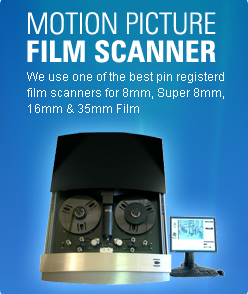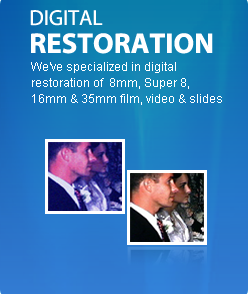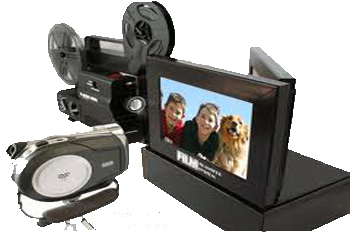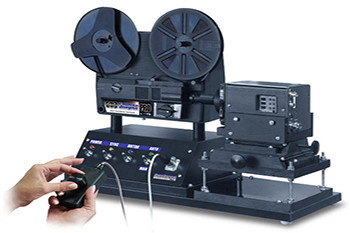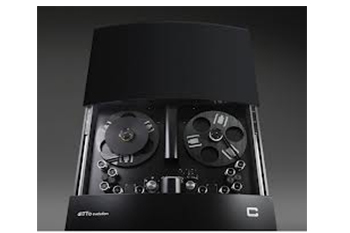
Film Conversion Equipment
Film Scanning and Film Transfer Equipment Types
The type of film scanning machine used for your 8mm, Super 8 or 16mm film conversion will have as much of an impact on the quality you receive as the resolution of the scan itself will. For example, if you wanted to digitize a photograph and tried doing it two different ways. You first put the photograph down on a table and took a picture of it using your smart phone or camera. Then you took the picture and scanned it using a flatbed scanner. If you compare the two side by side on your computer it will become really obvious that the flatbed scanner produced a digital image as good as the photograph. However, the picture you took with your phone or camera does not look close to the quality of the original photograph.
The same goes for scanning your 8mm, Super 8 or 16mm film. The real-time and frame by frame machines below are using a camcorder to take a picture of your film. The motion picture film scanner and Datacine machine are scanning the film. The results will be significantly different.
Film Conversion Equipment |
|
Real Time
|
|
Frame by Frame
|
|
Professional Film Scanners
|
|
Wichita Fun Facts: The arrival of railroads in 1872 brought additional prosperity, making Wichita a commercial center for cattle and agricultural products. Discovery of oil nearby in 1915 establishment of aircraft manufacturing plants in the 1920s caused another population explosion. Today, Wichita is the commercial and industrial center of the state, with a population of around 350,000. Known as the air capital of the world, Wichita is home to Airbus, Boeing, Bombardier, Cessna and Raytheon.
Kansas Fun Facts: military installation Fort Leavenworth. In 1954, it became a battleground of the civil rights movement when the landmark Brown v. Board of Education of Topeka case was decided in the Supreme Court, ending the doctrine of “separate but equal” in public schools. Kansas is also known for its contributions to jazz music, barbecue and as the setting of L.
